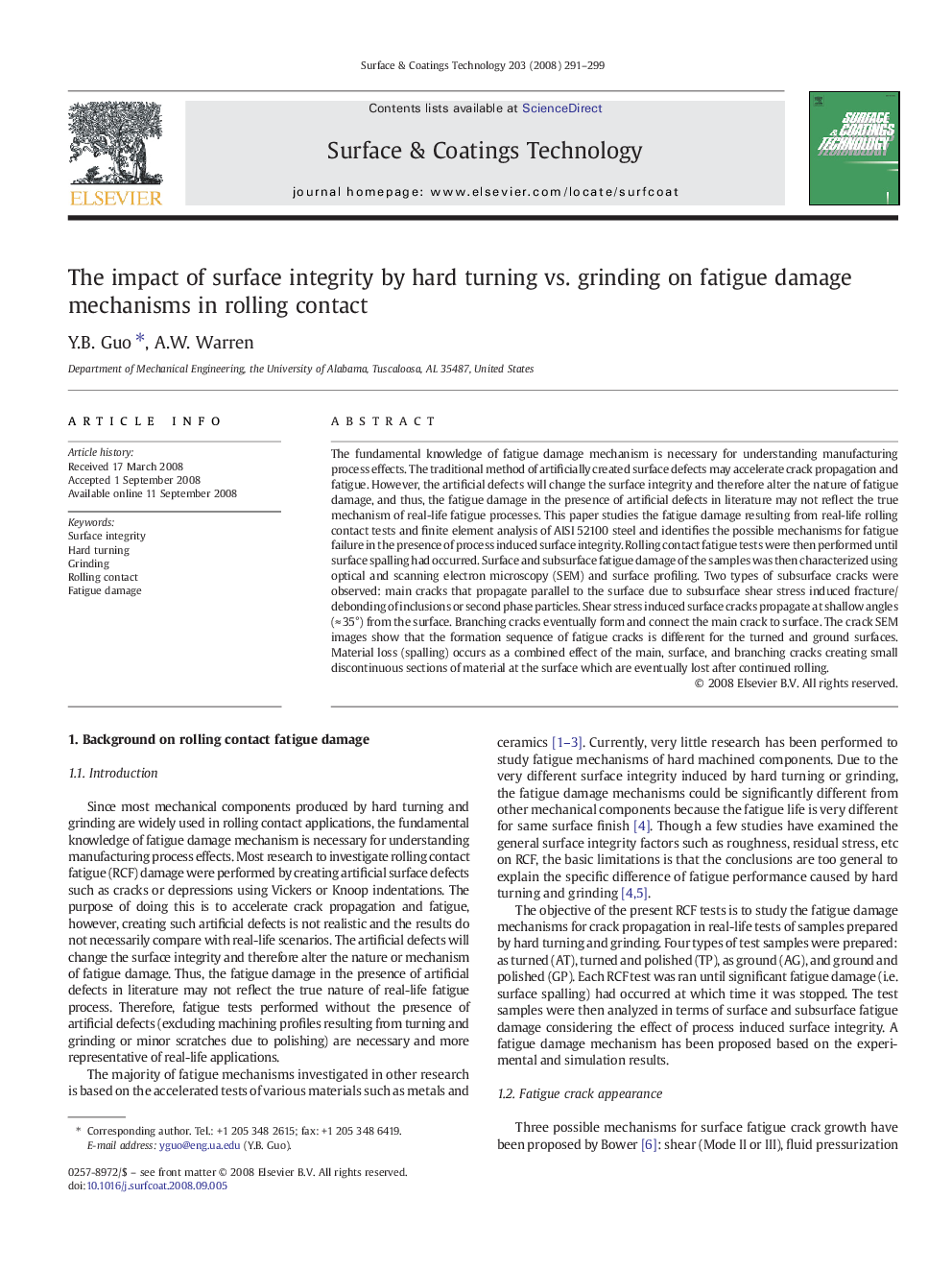| Article ID | Journal | Published Year | Pages | File Type |
|---|---|---|---|---|
| 1660959 | Surface and Coatings Technology | 2008 | 9 Pages |
The fundamental knowledge of fatigue damage mechanism is necessary for understanding manufacturing process effects. The traditional method of artificially created surface defects may accelerate crack propagation and fatigue. However, the artificial defects will change the surface integrity and therefore alter the nature of fatigue damage, and thus, the fatigue damage in the presence of artificial defects in literature may not reflect the true mechanism of real-life fatigue processes. This paper studies the fatigue damage resulting from real-life rolling contact tests and finite element analysis of AISI 52100 steel and identifies the possible mechanisms for fatigue failure in the presence of process induced surface integrity. Rolling contact fatigue tests were then performed until surface spalling had occurred. Surface and subsurface fatigue damage of the samples was then characterized using optical and scanning electron microscopy (SEM) and surface profiling. Two types of subsurface cracks were observed: main cracks that propagate parallel to the surface due to subsurface shear stress induced fracture/debonding of inclusions or second phase particles. Shear stress induced surface cracks propagate at shallow angles (≈ 35°) from the surface. Branching cracks eventually form and connect the main crack to surface. The crack SEM images show that the formation sequence of fatigue cracks is different for the turned and ground surfaces. Material loss (spalling) occurs as a combined effect of the main, surface, and branching cracks creating small discontinuous sections of material at the surface which are eventually lost after continued rolling.
